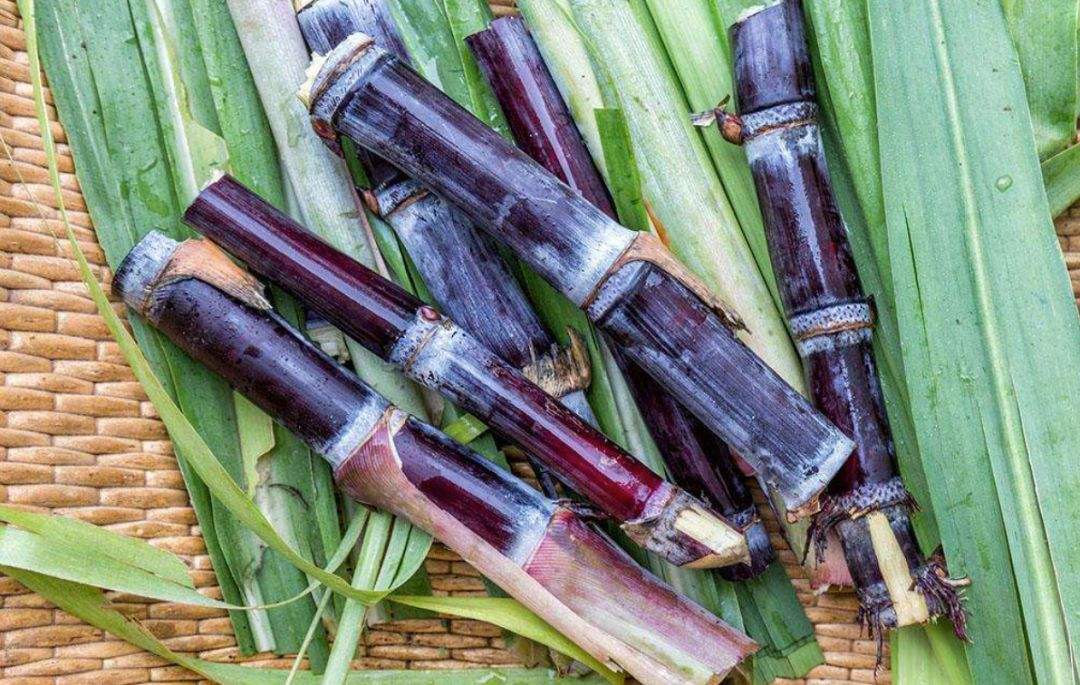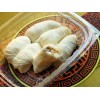Do you know Sugarcane?
Sugarcane, or sugar cane, are several species of tall perennial true grasses of the genus Saccharum, tribe Andropogoneae, native to the warm temperate to tropical regions of South, Southeast Asia, and New Guinea, and used for sugar production. It has stout, jointed, fibrous stalks that are rich in the sugar sucrose, which accumulates in the stalk internodes. The plant is two to six meters (six to twenty feet) tall. All sugar cane species can interbreed and the major commercial cultivars are complex hybrids. Sugarcane belongs to the grass family Poaceae, an economically important seed plant family that includes maize, wheat, rice, and sorghum, and many forage crops.
Sucrose, extracted and purified in specialized mill factories, is used as raw material in the food industry or is fermented to produce ethanol. Sugarcane is the world's largest crop by production quantity, with 1.9 billion tonnes produced in 2016, and Brazil accounting for 41% of the world total. In 2012, the Food and Agriculture Organization estimated it was cultivated on about 26 million hectares (64 million acres), in more than 90 countries.
The global demand for sugar is the primary driver of sugarcane agriculture. Cane accounts for 79% of sugar produced; most of the rest is made from sugar beets. Sugarcane predominantly grows in the tropical and subtropical regions (sugar beets grow in colder temperate regions). Other than sugar, products derived from sugarcane include falernum, molasses, rum, cacha?a (a traditional spirit from Brazil), bagasse, and ethanol. In some regions, people use sugarcane reeds to make pens, mats, screens, and thatch. The young, unexpanded inflorescence of Saccharum edule (duruka or tebu telor) is eaten raw, steamed, or toasted, and prepared in various ways in Southeast Asia, including Fiji and certain island communities of Indonesia.
Sugarcane was an ancient crop of the Austronesian and Papuan people. It was introduced to Polynesia, Island Melanesia, and Madagascar in prehistoric times via Austronesian sailors. It was also introduced to southern China and India by Austronesian traders at around 1200 to 1000 BC.
The Persians, followed by the Greeks, encountered the famous "reeds that produce honey without bees" in India between the 6th and 4th centuries BC. They adopted and then spread sugarcane agriculture. Merchants began to trade in sugar from India, which was considered a luxury and an expensive spice. In the 18th century AD, sugarcane plantations began in Caribbean, South American, Indian Ocean and Pacific island nations and the need for laborers became a major driver of large human migrations, both the voluntary in indentured servants and the involuntary migrations, in the form of slave labor.
Varieties
Sugarcane can be divided into fruit cane and sugar cane according to its use.
According to their appearance, they can also be divided into "Black Diamond" sugarcane, "Black Green" sugarcane and "White Jade" sugarcane.
Fruit cane is a kind of fresh sugarcane. It has the characteristics of easy tearing, less fibre, moderate sugar content, crisp stem, juicy taste, good taste, stem diameter, elongation and beautiful stem shape.
Sugarcane has a high sugar content and is used as raw material for sugar production. It is generally not used for fresh food on the market. Because the skin and hard fibers are thick and the taste is poor, they are only eaten fresh occasionally in the producing areas.
Medicinal value
Efficacy
Sugarcane is sweet, astringent, plain and non-toxic.
Help the temper, benefit the large intestine, relieve phlegm and thirst, in addition to heart and chest upset heat, antialcoholism; can also cure vomiting and nausea, wide chest diaphragm. Sugarcane and alcohol eat together, produce phlegm; eat more, deficiency fever, causing epistaxis. Burning ash retention, research end, children with headache and baldness, can be cured by frequent application. Be careful not to burn smoke into people's eyes, otherwise it can make people's eyesight decline.
Treatment of nausea: Seven liters of sugarcane juice, one liter of ginger juice, and evenly, daily fine swallowing.
Treatment of children's oral ulcer: burn and grind with sugarcane skin, rub the affected area.
Dietary therapy
Sugarcane tastes sweet and cold, belongs to the lung and stomach meridians; it has the functions of clearing heat and detoxification, generating body fluid and stopping thirst, stomach vomiting, nourishing yin and moistening dryness; it mainly treats dry mouth and tongue, insufficient body fluid, unfavorable urination, dry stool, dyspepsia, nausea and vomiting, hiccup, high fever and thirst.
Dietotherapy prescription:
1. Sugarcane Raphane Soup:
Sugarcane 200g, fresh radish 150g. Chop and boil the radish until it is ripe. Remove the residue and get the juice. Take as much as you like.
Both of them can play the role of clearing away heat and irritation, eliminating alcoholism and poisoning, and reducing food and qi. Used for excessive drinking and eating, hot face red, nausea and eating less.
2. Sugarcane ginger juice:
Sugarcane 250-500g, ginger 15-30g. Cut the juice into pieces, pound it slightly, take it evenly, or fry it hot. It can be taken 3-4 times.
This prescription uses sugarcane juice to nourish the stomach and relieve vomiting. Although the sugarcane juice is cold and the ginger juice is warm, the combination is more peaceful. Used for insufficient yin, upstream stomach qi, nausea and vomiting, or choking diaphragm diet.
3. Sugarcane pulp, sorghum and rice porridge:
Sugarcane 500g, chop slightly, squeeze juice, add millet (sorghum rice) 60g, add water, boil porridge.
This prescription takes sugarcane juice to nourish the stomach and nourish the body, moisten lung and dry, and millet to nourish spleen and stomach; both of them can remove heat. For spleen and lung insufficiency, Yin deficiency, lung dryness, hot cough, bad throat.
Matching and taboo
Good partner
1. Sugarcane + white radish + lily: squeeze juice together, often drink on tracheitis, tuberculosis has an auxiliary therapeutic effect.
2. Sugarcane + beef: Sugarcane beef balls made from sugarcane juice and beef are sweet but not greasy, tender and fragrant, and rich in protein, fat, calcium, phosphorus, iron, nicotinic acid and vitamin E and other nutrients.
3. Sugarcane + yam: If you cough with phlegm, you can grind yam into the mud and take a half bowl, and squeeze sugar cane juice to take a half bowl. Mix the two together and eat them after steaming, which is very good for your health.
Misunderstanding of collocation
1. Sugarcane-Fish Bamboo Shoot: The Compendium of Materia Medica records: "It is not good for people to eat sugarcane and fish bamboo shoot together." The specific pharmacology is not clear.
2. Sugarcane-liquor: Although sugarcane has anti alcoholic function, it can not eat with liquor, and it is easy to produce phlegm when eating with liquor.
3. Sugarcane Juice-Wine: Sugarcane, if eaten with wine, will reduce the body's absorption of copper.
Related Articles
Search
Categories
Popular Posts




















Comments: 0
No comments